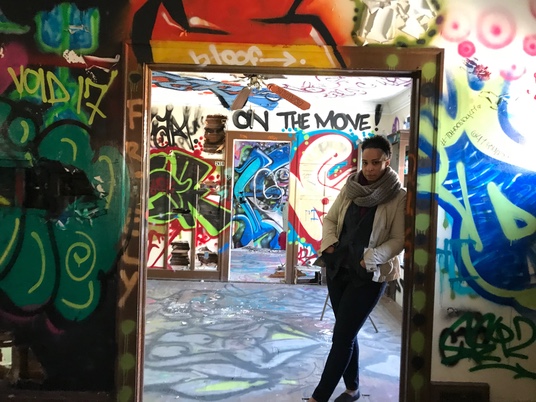
The Black House Gallery isn’t abandoned; it’s waiting to be recycled. A message scrawled on a wall next to a muraled arm chair and framed art piece impersonating actual living room furniture reminds visitors of this fact.
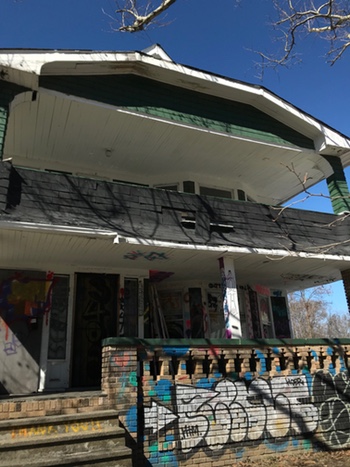
The entire house-turned-gallery — or living tribute to graffiti art — is muraled and tagged from floor to ceiling. Eyes sprayed on a window look out — or maybe it’s in. A collection of rubber duckies that look like they’ve spent the past decade in a ditch sits on the mantle. Spray cans crammed into built-in cabinets in what was once the dining room are up for grabs, encouraging anyone who wanders into the E. 119th Street house gallery to add their heart to its walls.
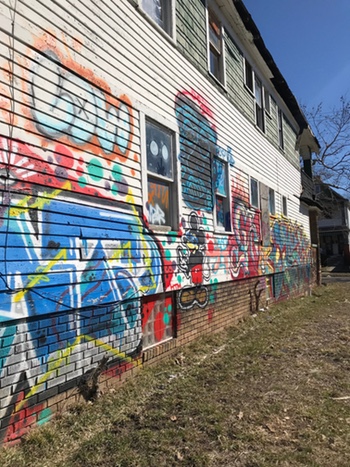
Althea Jones, the gallery’s owner, originally bought the property, which includes a second house set back a little further, in 2006. She’d been renting the houses out for a few years, when the housing crisis forced her into bankruptcy in 2012. Pretty much the entire street became abandoned. The bank didn’t want the houses, and the city wasn’t going to bother tearing them down, so they sat vacant, slowly decaying. The second house hasn’t held up as well as the Black House. There are plans to board it up and paint it.
Jones would sit outside in her car, staring at the property for hours thinking, “What am I going to do?”
She could have just walked away, but since nobody claimed the houses, she still felt a sense of ownership.
Jones was also in the process of rediscovering herself as an artist. After years working at the VA hospital and then as a business consultant, she quit painting all together — something she excelled at as a kid.
“That part of me literally had died. I didn’t have a sketchbook. I didn’t do anything artistic other than when my sister asked me to write something because my handwriting is better,” she said. But a surprise painting party on her 34th birthday brought her back to creating mostly acrylic abstracts and thinking about art.

She kept listening to herself and her house, knowing a future or a path to it was there somewhere.
Over the years, scrappers had broken in and salvaged any valuable materials. Still, theBlack House has no electricity or running water.
Unsure what her plans were, Jones started stripping the house down to its bones. She spent months hauling out old carpet and 200 bags of trash. Then, on a whim, she reached out to a friend who was photographing abandoned spaces and other urban landscapes, and, in July 2016, she had her first art show featuring the work of about 10 local photographers.
“The show was awesome,” said Jones. About 150 people showed up the first day, some participating in an interactive graffiti room she set up.
“It has kind of spread from there.”
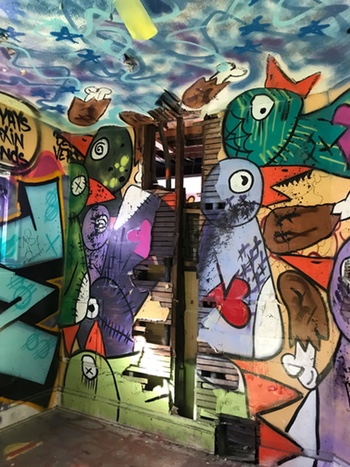
The Sign Guy’s instantly recognizable giant birds fill an entire wall in one room. Other artists have added tags and paste-ups. Everywhere, there are messages scrawled: Love life. Do you. On the move! Plant seeds. It’s always sunny in Cleveland.
Even in late March you can see your breath, especially with a recently-broken window lying on the floor, which likely let in the raccoon that scurried away when the door opened. This type of vandalism isn’t common, though. The community respects this space.
The city, on the other hand, is another story.
“Everything we do is quasi-illegal,” said Jones, always careful to protect the identity of the artists who regularly work there.
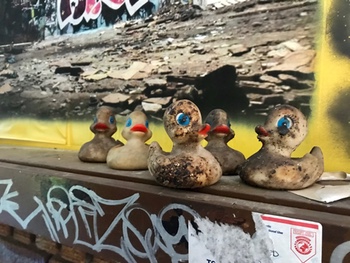
As Jones replaces all the windows and maintains whatever else seems feasible, she also has a September court date related to her use of the house looming over her head — just enough time to have a great summer in the gallery, she figures. She’d like purchase two vacant lots on either side of her property, get electricity and running water, and make other ambitious repairs, but until she knows what the future holds for the gallery, these investments don’t make sense.
This summer, the goal is to paint the house black. There’s no real back story; no political message.
“I’ve always wanted to live in a black house,” Jones said. “They’re beautiful.”
By June, the Black House should be up and running again. All summer Jones spends most of her free time in the gallery, which she leases for art shows. She also offers graffiti classes and kids’ workshops. Jones also offers pop-up poetry events at other abandoned locations throughout the city, as well as workshops at the House of Blues and other venues.
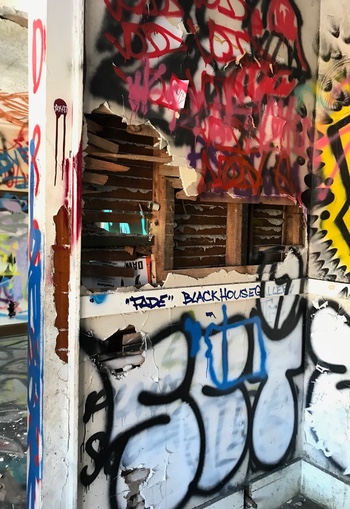
Mostly, she just hangs around the gallery as much as possible to make sure the space is open and there for people to walk around, spray paint and spend time together, nurturing a stronger community.
Most Black House events are geared toward newer artists or people finding their way.
“Because you need that safe space where it’s comfortable, you have affirmation, you don’t feel like a weirdo,” said Jones.
Because of the people who’ve come together around this idea and in this space, even if the city does eventually tear down the gallery, what’s grown there will remain.
“Everything will continue because it’s not just about this building,” said Jones.
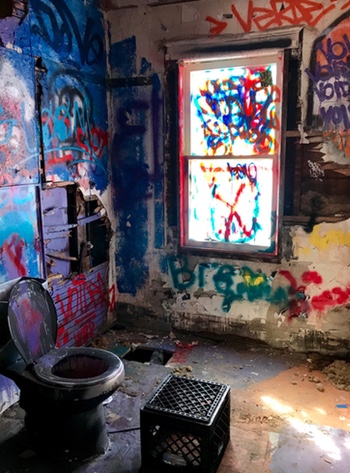
“It’s really about all of the people that go into making every event and every cool thing that we do, so it’s definitely a very cool space and a very cool thing to do, but it’s not about the building, it really is about the people that help make it up.”
All the time, art changes. Little assemblage pieces evolve. Random items left in the front yard get spray painted and then disappear.
“It’s like a living and breathing place,” Jones added, standing on the sidewalk, dreaming as she spoke.
NOTE: For updates on workshops or events, follow The Black House Gallery on Instagram @theblackhousegallery or visit theblackhousegallery.com.
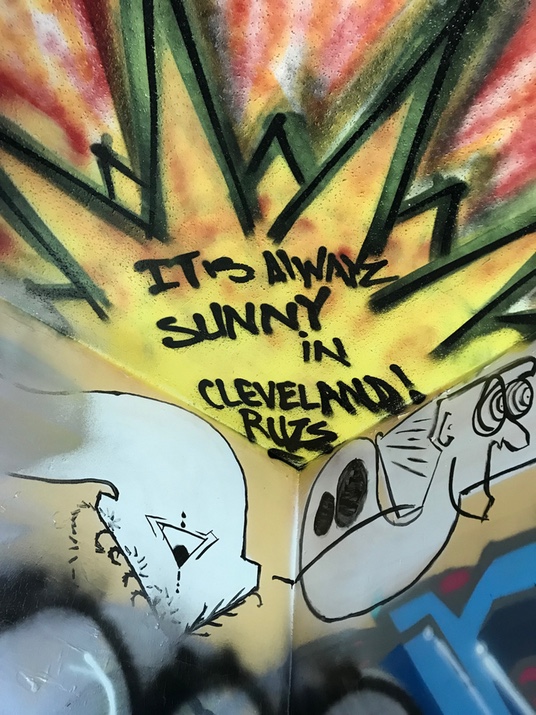
[All photos by Nicole Hennessy]